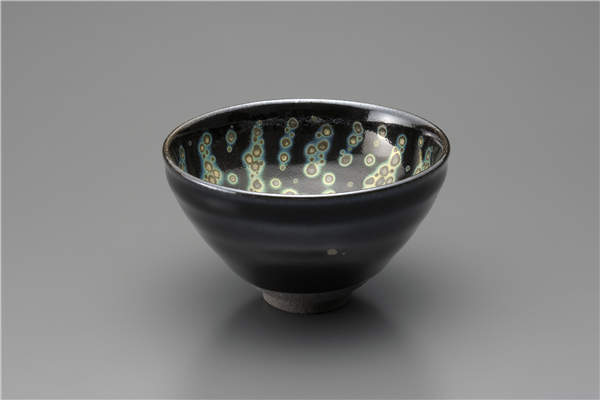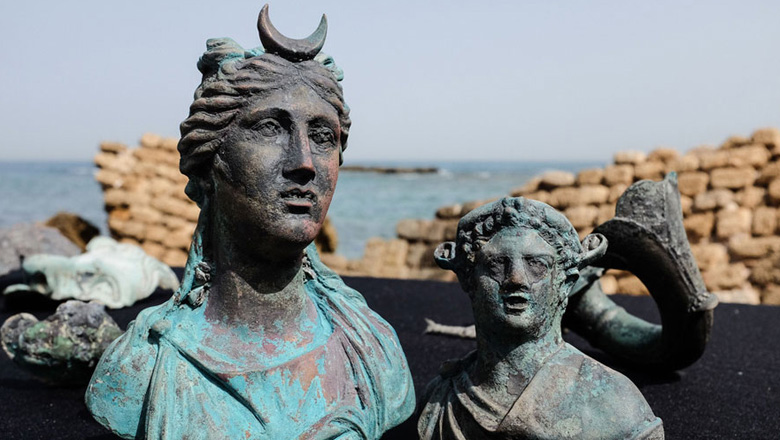Firing up an ancient art
Updated: 2016-05-17 08:05
By Cai Hong(China Daily)
|
||||||||
 |
|
One of Japanese artist Kyosuke Hayashi's creations |
When observers gaze long enough at the surface, it appears to resemble an expanse of stars drifting across the heavens on a summer's night.
People from the Song Dynasty had a reason for tea bowls of this type. They would grind compressed tea into a fine powder with a stone mill, and then whisk it into froth in bowls. The best teas were judged by the purity and whiteness of their froth.
Jian zhan tea bowls were ideal for appreciating the light frothy foam. The bowls had deep blacks and reds with flecks of gold-the perfect contrast to the white and green of the tea, making the tea seem even more pure.
Another method used was oil-spot glazing, one of the most difficult glazing techniques. It required precision in the application, the firing conditions and the cooling process.
Oil spots occur when there is an excess of iron oxide, which is allowed to cool slowly and form radiant spots on the surface.
In the 13th century, jian zhan ware was introduced to Japan by its Buddhist monks returning from their studies in China.
Japan's Ashikaga shoguns (1336-1573), both warriors and avid tea practitioners, promoted the use of the Chinese-made tea bowls in chado, or the Japanese tea ceremony. Since then, yohen tenmoku tea bowls have held a revered position in the history and development of chado.
The Song Dynasty came to an abrupt end in the wake of the Mongol nomads, and with it, powdered tea gave way to tea leaves. The secrets of jian zhan glazing and firing techniques were lost.
In contrast, Japan continued the tradition of the Song Dynasty. With their source of yohen tenmoku bowls cut off, they created replicas.
China has excavated many fragments of jian zhan ware but not a single complete piece. The only four remaining complete examples of the chinaware fired in the Song Dynasty exist in Japan.

 Apple's CEO Tim Cook's eight visits to China in four years
Apple's CEO Tim Cook's eight visits to China in four years
 Annual New York cake show designs fool your eyes
Annual New York cake show designs fool your eyes
 Divers find ancient Roman cargo from shipwreck in Israel
Divers find ancient Roman cargo from shipwreck in Israel
 Taoist priests worship their ancestors in Central China
Taoist priests worship their ancestors in Central China
 The world in photos: May 9-May 15
The world in photos: May 9-May 15
 Top 10 most generous companies in China
Top 10 most generous companies in China
 Wine market shrugs off slump
Wine market shrugs off slump
 Terracotta teddy bears debut in Wuxi
Terracotta teddy bears debut in Wuxi
Most Viewed
Editor's Picks

|

|

|

|

|

|
Today's Top News
Liang avoids jail in shooting death
China's finance minister addresses ratings downgrade
Duke alumni visit Chinese Embassy
Marriott unlikely to top Anbang offer for Starwood: Observers
Chinese biopharma debuts on Nasdaq
What ends Jeb Bush's White House hopes
Investigation for Nicolas's campaign
Will US-ASEAN meeting be good for region?
US Weekly

|

|







